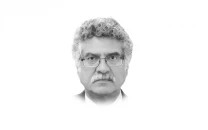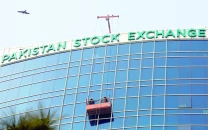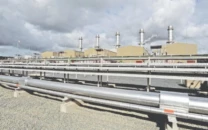Trump 2.0, South Asia, and EU
The international system is being unravelled not by some external forces but by the same power who once upheld it.

At a recent international conference in Kathmandu, which brought together regional experts and European voices, I had the opportunity to share perspectives on how the European Union and South Asia can build a deeper strategic partnership.
My intervention focused on the implications of evolving U.S. policies under the second Trump administration, and how closer EU–South Asia cooperation could contribute to regional stability and economic resilience.
The conference was convened at an appropriate time because the return of Donald Trump has sent shockwaves in the international system where friends, allies, partners, adversaries, and competitors alike feel a major reset in ties is being demanded by Donald Trump in the White House.
His second term so far appears to be more aggressive and transactional in nature abandoning multilateralism in favour of short term and zero sum gains. Key institutions are being dismantled: USAID is defunded, WHO is abandoned, and Paris Climate Agreement is once again discarded.
The international system is being unravelled not by some external forces but by the same power who once upheld it. This is not just a shift in the policy rather a radical transformation in how the US under Trump engages with the world prioritizing dominance over diplomacy. Protectionist policies are fracturing global supply chains with rising tariffs on allies and competitors alike fuelling economic instability.
Against this backdrop, South Asia also faces the heightened risks, as US trade restrictions could hit key industries like textiles, pharmaceuticals and IT services etc. Ban Ki-moon, the former Secretary General of UN once remarked that the security of our world is inseparably linked with the security of the South Asia and his words are more relevant than ever before.
South Asia is home to 2 billion people, comprising 25% population of the world, home to some of the fastest growing economies as well as the vulnerable ones. South Asia ranks as the second poorest region in the world after Sub-Saharan Africa. It's also one of the least economically connected, with weak regional integration holding it back. Add to that the fact that it’s home to two rival nuclear-armed states, it’s clear why the region is so critical to global peace and economic stability.
In recent years, the region has been hit hard by crisis after crisis—Pakistan’s devastating floods in 2022, the financial collapse in Sri Lanka, and the worsening situation in Afghanistan since the Taliban took over in 2021.
These developments have had far-reaching implications, particularly for Pakistan, where terrorist activity has surged. According to the UN Analytical Support and Sanctions Monitoring Team’s latest report (July–December 2024), the Tehrik-i-Taliban Pakistan (TTP), also referred to as Fitna Al Khawarij, has emerged as the most active militant group operating from Afghan soil, carrying out more than 600 attacks in Pakistan last year alone.
The TTP leader Noor Wali Mehsud benefits from financial backing, receiving $43,000 per month from the Afghan Taliban. The 2,500+ fatalities from terrorism-related violence in Pakistan in 2024 marked a decade-high record. US has largely maintained a distant, punitive approach, imposing sanctions on Pakistan’s defence sector instead of extending counterterrorism assistance.
As Washington shifts its gaze elsewhere, Pakistan is left to manage a worsening security situation largely on its own. The recent counter-terrorism talks with the EU in Brussels couldn’t have come at a better time. Both sides had a chance to discuss shared concerns—Afghanistan being front and centre.
With things changing so fast on the global stage, the European Union finds itself in a position to do more—not just on the security front, but in backing economic progress and longer-term development. Let’s not forget, South Asia is one of the most climate-vulnerable regions on the planet. That alone makes stronger cooperation not just helpful, but essential.
The EU’s Green Deal could open doors for joint efforts, especially if supported by more climate finance through programmes like GCCA+. At the same time, expanding trade access—particularly through widening the GSP+ scheme—would help South Asian economies plug into global markets.
That could mean real progress for industries across the region. But for any of this to work, both sides need to commit. Real diplomacy, smart investments, and cooperation on key issues could turn this into a partnership that actually delivers—not just for governments, but for people.



1729685382-0/Untitled-design-(57)1729685382-0-208x130.webp)










COMMENTS
Comments are moderated and generally will be posted if they are on-topic and not abusive.
For more information, please see our Comments FAQ